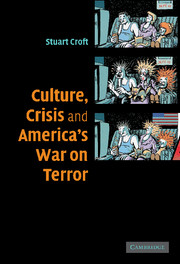Book contents
- Frontmatter
- Contents
- List of figures
- Acknowledgements
- Introduction
- 1 Disrupting meaning
- 2 Deconstructing the second American 9/11
- 3 The decisive intervention
- 4 The institutionalisation and stabilisation of the policy programme
- 5 Acts of resistance to the ‘war to terror’
- 6 The discourse strikes back
- 7 Conclusion
- Select bibliography
- Index
2 - Deconstructing the second American 9/11
Published online by Cambridge University Press: 15 December 2009
- Frontmatter
- Contents
- List of figures
- Acknowledgements
- Introduction
- 1 Disrupting meaning
- 2 Deconstructing the second American 9/11
- 3 The decisive intervention
- 4 The institutionalisation and stabilisation of the policy programme
- 5 Acts of resistance to the ‘war to terror’
- 6 The discourse strikes back
- 7 Conclusion
- Select bibliography
- Index
Summary
Introduction
The events of 11 September 2001 were profound: for those families and friends who lost loved ones; for the politics of the United States; and for the way in which global security is spoken of and practised. The Palestinian writer M. Shahid Alam likened the second American 9/11 to ‘an eruption, a volcanic eruption that has thrust lava and ashes from our netherworld, the dark netherworld of the Periphery, into the rich and tranquil landscape of America’. The violence that is so much an everyday event in so much of the world, the violence outside, spilled over into the American inside. Three thousand people died at work, or on their way to work. America became embattled. President George W. Bush said:
September the 11th was a horrible day for our nation, and we must never forget the lessons of September the 11th … It's a time that really changed our perspective about the world. See, we never really thought America would be a battlefield. We thought oceans would protect us. That was kind of the conventional wisdom of the time. And therefore, our defenses were aligned that way, our offenses were aligned that way.
The United States began to spend enormous amounts of money on ‘homeland defence’: the new department was to receive $19.5 billion in 2002, and $37.7 billion in 2003. American defence budgets were to rise from some $300 billion in 2000, to $396 billion for 2003; with a projected increase to $470 billion for 2007.
- Type
- Chapter
- Information
- Culture, Crisis and America's War on Terror , pp. 37 - 83Publisher: Cambridge University PressPrint publication year: 2006



